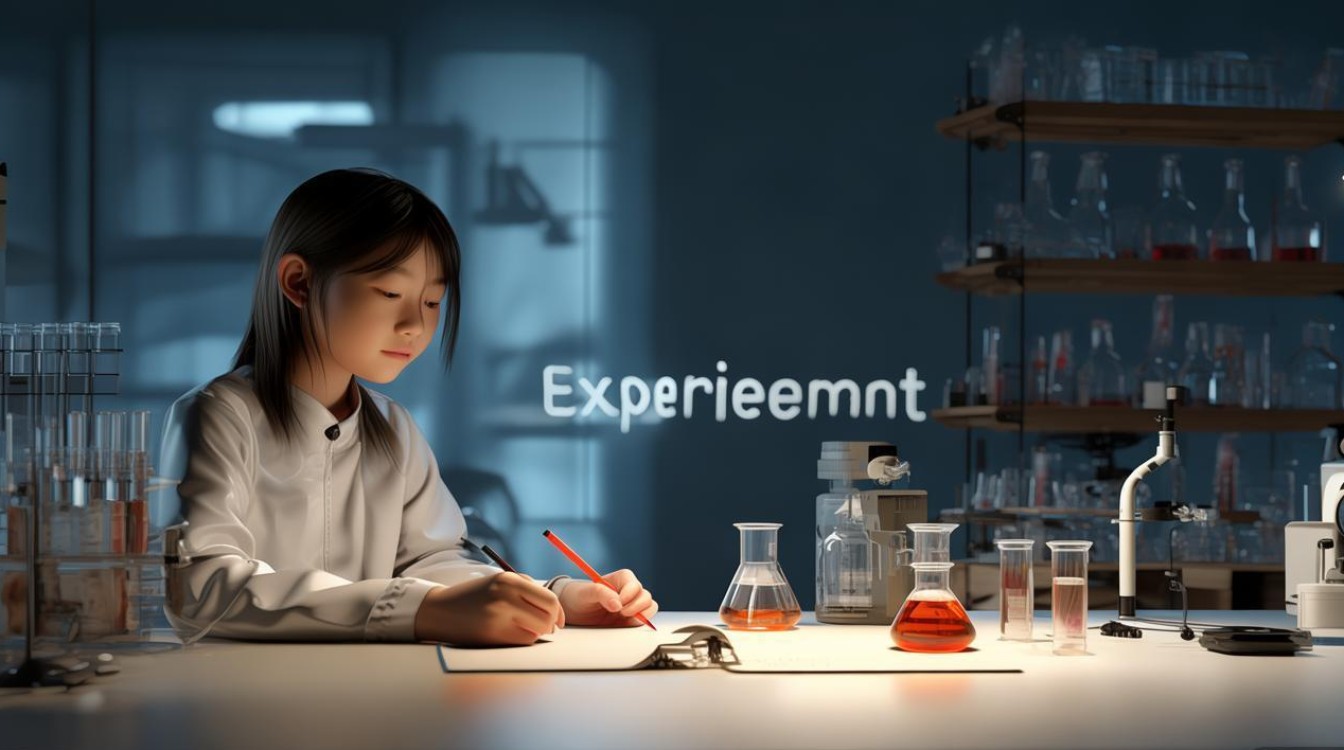在雅思口语考试中,“experiment”是一个高频且灵活的话题,它不仅出现在Part 1的日常交流中,也可能延伸至Part 2的个人经历描述,甚至在Part 3的社会讨论中涉及科学方法与创新思维,无论是学生时代的科学课实验,还是生活中的趣味尝试,掌握如何清晰、生动地描述实验经历,能够有效展现语言组织能力、逻辑思维细节把控能力,以下从实验的基本要素、口语表达策略、高分范例解析及备考建议四个方面,全面解析雅思口语中的“experiment”话题。

实验描述的核心要素
在口语中描述实验时,需涵盖“背景-目的-过程-结果-反思”五个关键环节,确保内容完整且有逻辑,具体要素及表达方向如下:
| 要素 | 内容要点 | 常用表达示例 |
|---|---|---|
| 背景(Background) | 实验的起因、场景(如学校、家庭、科研) | “In high school physics class, we were asked to explore the principle of momentum.” |
| 目的(Objective) | 实验要验证的假设、解决的问题或学习目标 | “The goal was to understand how mass and velocity affect the force of impact.” |
| 过程(Procedure) | 实验步骤、使用的材料、操作细节(按时间顺序或逻辑顺序描述) | “First, we gathered a cart, weights, and a motion sensor. Then we adjusted the mass…” |
| 结果(Result) | 观察到的现象、数据变化、与预期的对比 | “We found that doubling the mass doubled the impact force, while velocity had a greater exponential effect.” |
| 反思(Reflection) | 实验的收获、遇到的困难、改进建议或对个人的启发 | “This experiment taught me the importance of controlling variables, which is crucial in scientific research.” |
口语表达策略与技巧
-
逻辑连接词的灵活运用
使用“First/Then/Next/Finally”描述步骤,“However/As a result/Unexpectedly”转折或强调结果,“For instance/Specifically”举例说明细节,避免内容松散。
“At first, we predicted the velocity would be the only influential factor. However, after collecting data, we realized mass played a more significant role than expected.” -
细节化描述增强画面感
通过具体数据、感官体验(视觉、听觉)或个人感受让描述更生动。
“When the cart collided with the barrier, the motion sensor displayed a sharp spike on the graph, accompanied by a loud ‘clunk’ sound.” -
时态与语态的准确切换
背景和目的常用一般过去时或一般现在时;过程描述以过去时为主,涉及科学原理时可用一般现在时(如“The law of conservation of momentum states that…”);反思部分可用现在完成时或情态动词(如“I should have checked the sensor calibration beforehand”)。
高分范例解析(Part 2 线索卡)
Describe an experiment you did in school
You should say: what the experiment was, when and where you did it, who you did it with, and what you learned from it.
参考回答:
One experiment that left a deep impression on me was a chemistry investigation I conducted in 10th grade. Our science teacher assigned this project to help us understand the reaction rates between different substances, and it took place in the school laboratory during our regular Tuesday afternoon class.
The objective was simple yet fascinating: to observe how varying the concentration of hydrochloric acid affects the speed at which it reacts with magnesium strips. We worked in groups of three, and my teammates—Lily and Mike—were as curious as I was. We gathered materials test tubes, a stopwatch, measuring cylinders, and magnesium ribbons of equal length.
Here’s how we proceeded. First, we prepared five solutions of hydrochloric acid with concentrations ranging from 0.5M to 2.5M by diluting the concentrated acid with distilled water. For each concentration, we dropped a 2cm magnesium strip into a test tube containing 10ml of the solution and started the stopwatch immediately. Our task was to record the time it took for the magnesium to completely dissolve, indicated by the disappearance of bubbles and the solid ribbon.
The results were striking. With the 0.5M acid, the magnesium took nearly 8 minutes to react, whereas the 2.5M solution caused the ribbon to vanish in just 45 seconds! We plotted a graph later, showing a clear inverse relationship between concentration and reaction time. What surprised us most was that even a small increase in concentration led to a disproportionately faster reaction—this nonlinear trend sparked a lively debate in our group.
From this experiment, I learned more than just chemistry concepts. I realized the importance of precision; for instance, we initially forgot to dry the measuring cylinders after rinsing, which slightly contaminated the solutions and skewed our first trial. More importantly, it taught me that scientific conclusions require patience and attention to detail—something I’d overlooked in earlier lab work. This experience not only deepened my understanding of reaction kinetics but also inspired me to approach problems with a more methodical mindset.
备考建议
-
积累实验相关词汇与表达
分类整理材料(apparatus)、步骤(procedure)、现象(phenomenon)等词汇,pipette(移液管), hypothesis(假设), control variable(控制变量), precipitate(沉淀)。 -
结合个人经历准备素材
回忆学生时代的科学实验、生活中的小尝试(如烘焙、种植),或关注简单的科学现象(如彩虹形成、植物向光性),避免编造不熟悉的内容。 -
模拟练习与反馈
针对Part 2的“Describe an experiment”进行限时1-2分钟的陈述录音,注意逻辑连贯性和语法准确性,可请老师或伙伴指出改进点。
FAQs
雅思口语描述实验时,是否需要使用复杂的科学术语?
不必刻意堆砌专业词汇,考试更看重语言的准确性和自然度,若术语使用不当(如发音错误或搭配不当)反而会扣分,可用简单词汇解释概念,“The experiment showed that stronger acid reacts faster with metal”比“The reaction rate is proportional to the molar concentration of H⁺ ions”更口语化且易懂。
如果没有做过实验,如何回答Part 2的实验话题?
可通过“合理想象+细节填充”构建经历,描述一个“植物生长实验”:假设自己探究“光照对绿豆发芽的影响”,虚构步骤(“分组放在窗台和柜子里,每天记录高度”)、结果(“窗台的豆芽3天后长出根柜子里的几乎没变化”)和反思(“原来植物真的需要阳光”),关键是描述逻辑清晰、细节真实,避免明显矛盾即可。











